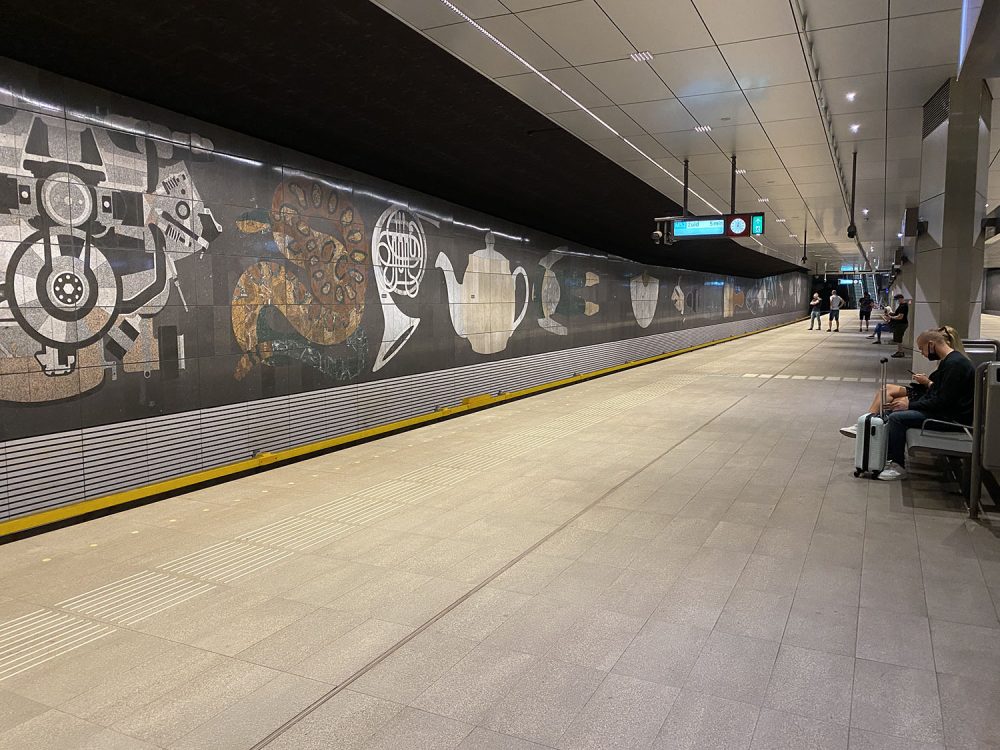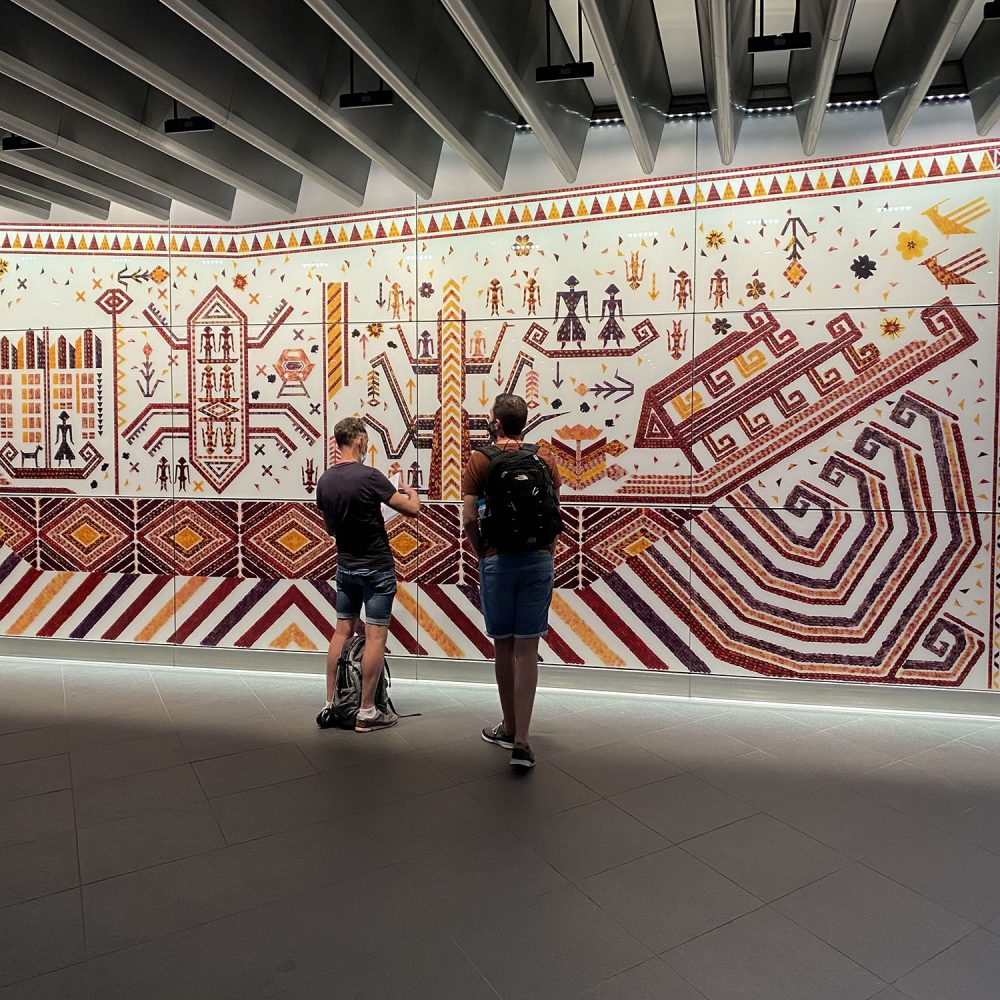Twenty years of QArt
Twenty years ago, Véronique Baar founded QKunst. Until then, she was curator of a corporate collection. She noticed that the employees were curious about the collection and wanted to know more about it, but that contemporary art was also far removed from their world of experience. By founding QKunst (a playful reference to the q in her first name) she wanted to bridge the gap between contemporary art and non-museum audiences; the employee at an office, visitor to a town hall, train passenger, students, casual passerby, et cetera. Esther Didden looks back on the past twenty years with Véronique Baar.

Image in this article: visual art on the North/South Line, from top to bottom: I want a permanent wave By Gerald van der Kaap; The crocodile, the melodica, the pike fish, ... by Daniel Dewar and Grégory Gicquel; Tulip Palepai, navigating the river of the world by Jennifer Tee.
The concept behind QArt has caught on. It has long since ceased to be a one-man business, and the team is no longer concerned only with collections. QKunst is also involved in the realization of art in public spaces. Sometimes in planning and securing budgets, other times to write a vision for the development or expansion of an area and how to deal with art there. In all projects, the team tries to contribute to creating space for art in the everyday environment. Clients are mainly the (semi)government and, increasingly nowadays, educational organizations and healthcare institutions. But also large companies such as Rabobank, KPN and Achmea.
In all projects, the team seeks to contribute to space for art in the everyday environment
Similarly, QKunst worked for Delft University of Technology. They inventoried the outdoor art collection and formulated a management and conservation plan. In dialogue with heritage, real estate and facilities staff and students, they developed the long-term vision "Living campus, living art" to expand the collection in the coming decades. In parallel with a large-scale campus development, the university will now realize artworks that reflect on science and technology. QKunst helped ensure that the art budget will be secured for the next ten years and that artists will work with students to develop an artwork for a pond on campus around ecology and biodiversity.

Another project worth mentioning is the North/South Line. QKunst realized, commissioned by the municipality of Amsterdam, nine artworks at all subway stations. The artworks give the stations their own identity and are also an oriëntation point for travelers. For seven years, QKunst switched between all parties involved, from concept development to completion of the artworks. At subway station Central Station, the artwork Tulip Palepai, navigating the river of the world by Jennifer Tee on display. About 80,000 people pass through this artwork daily. In 2020, the work of art is by BK Information declared ONEn of the 100 Key Works Art in Public Space after 1945.
For seven years, QKunst switched between all parties involved
Looking back on twenty years of art in public space, Baar explains that the structures through which works of art were created have changed in particular. For example, municipalities used to have an art commission, consisting of a small group of experts. They formulated the commission, invited artists for a sketch design and then selected a design that could be realized. Nowadays, clients want to involve the users of a building or place in the creation of a work of art. "Social context, spatial integration and artistic quality ideally coincide in this process, but that is quite a challenge." said Baar.

She explains that she has not yet ONEn has developed a way to involve groups of users (e.g., residents) from the outset. There are many forms of involvement and it varies from situation to situation. Sometimes the client has already set up a participatory process or organized rounds of voting. She emphasizes that participation is much more about having a dialogue than giving a voice. If you listen carefully to the knowledge and experience that the users of a place have, then as a client or artist you can take that on board. It may require extra time and flexibility in the process, but it increases the likelihood of a supported outcome.
How does she deal with residents who would like to see an art commission given to a local artist? Baar recognizes that desire but indicates that as far as she is concerned, the commission wording is leading in the selection of an artist. A local artist may be appropriate. An artist who does not know the local situation will have to do more research to get to know an area. She indicates that it is sometimes good to develop several types of commissions side by side, for example also temporary work or a one-time intervention, which allows artists from different backgrounds and at different stages of development to be involved.
If you listen carefully to the knowledge and experience that the users of a place have, you can take that on board as a client or artist
It strikes her that many young artists are geïnterested in creating art for public spaces, but are more focused on experimentation than on enduring work. Clients, on the other hand, increasingly value a work of art that is durable. The agreements surrounding such matters as the duration or maintenance of a work of art are nowadays recorded at an early stage so that both artist and client know what their rights are. én duties. That, too, is different from before.
Many clients like to give an art commission to an artist with extensive work experience. Understandable but difficult for young artists. To help them on their way, Véronique and colleagues Krista van der Bron and Fadenka van der Sloot will soon launch the project BUILD!. Seven young artists will set to work in business park Lage Weide (Utrecht), coached by experienced artist Ruud Kuijer and in exchange with the companies and startups focused on circularity, climate adaptation and mobility.



